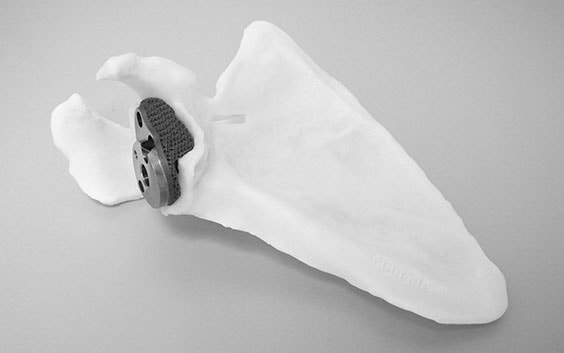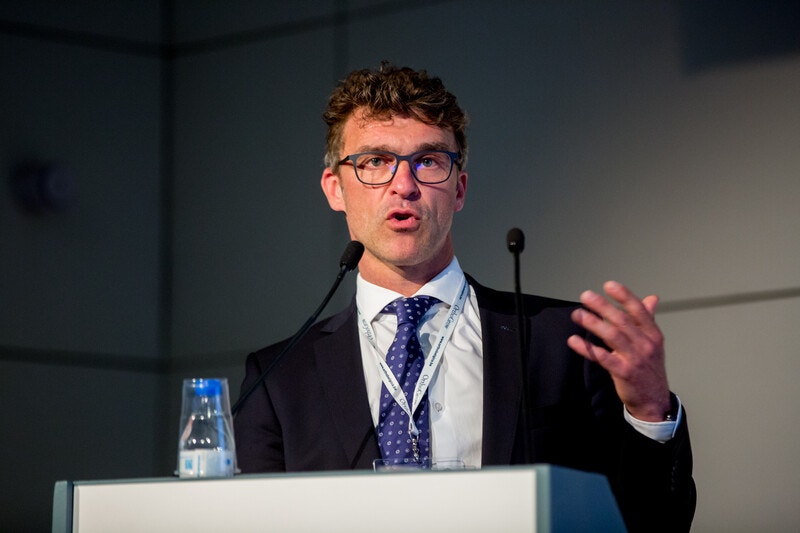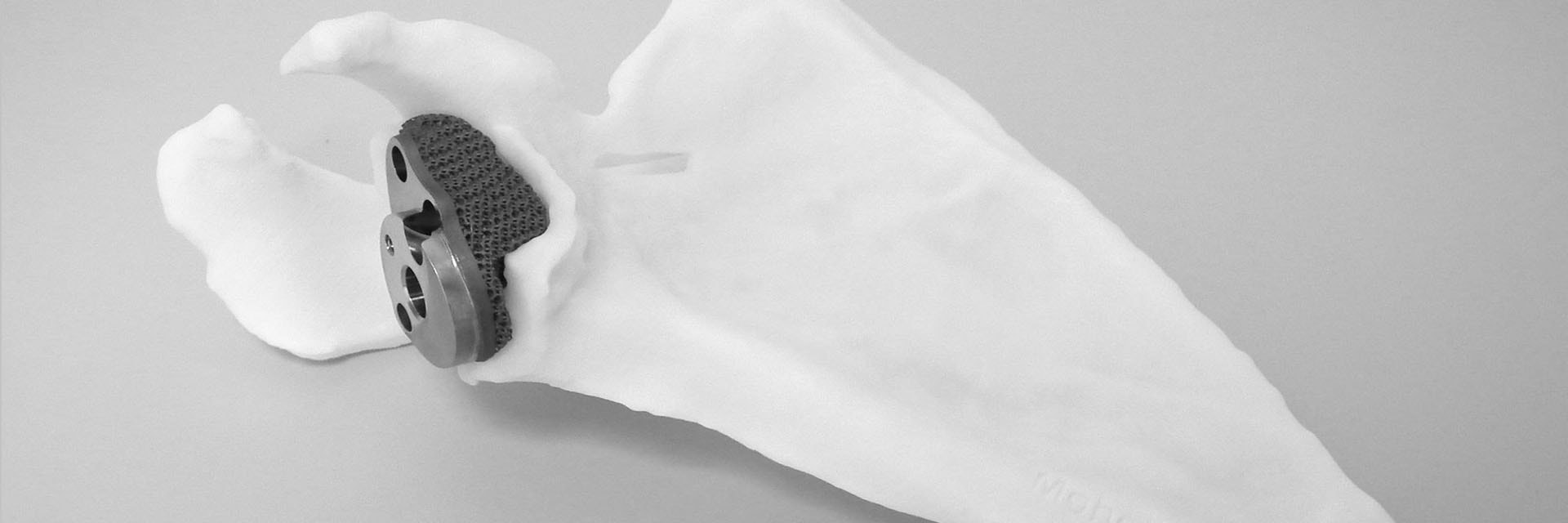CASE STUDY
How a Personalized Shoulder Surgery Has Helped a 60-Year-Old Fulfill Daily Activities Again

When Dr. Van den Bogaert, an Orthopedic Surgeon at AZ Herentals Hospital in Belgium, realized that a classic pegged baseplate was not an option for a patient suffering from serious shoulder arthrosis, he contacted Materialise to explore how a personalized solution could offer a successful outcome.
Complex shoulder revision surgery
A 60-year-old woman suffering from shoulder pain and limited range of motion visited Dr. Van den Bogaert.


After analysis of the medical images indicating devastating shoulder arthrosis with severe medialization and complete loss of the glenoid vault, Dr. Van den Bogaert decided that implantation of a classic pegged baseplate for reverse total shoulder was not an option in this case.


Additionally, because of the huge loss of bone stock and the sclerotic remaining cavity, the surgeon concluded that, in this case, the interposition of a massive bone graft would have little chance for ingrowth and survival and, hence, little chance to offer sufficient stability.
Aware of the choice of personalized solutions, Dr. Van den Bogaert contacted Materialise to find out how he could achieve the best outcome for his patient. When it comes to shoulder joint replacements, a patient-specific approach can often be more suitable than standard solutions — particularly in cases involving severe bone defects.
3D printing in orthopaedic surgery
Dr. Van den Bogaert worked with Materialise’s clinical engineering team to define the best design for the custom-made glenoid implant, which included a baseplate for a reverse shoulder replacement prosthesis augmented with a porous structure exactly matching the patient’s glenoid cavity.


Preoperative planning included optimizing the baseplate's position to reconstruct the joint center of rotation to an anatomical position as much as possible. In addition, screw position and orientation were fully customized, to address the strongest parts of the (remaining) scapular bone.
The custom-made titanium implant was manufactured with 3D printing. Next, 3D-printed, personalized guides were designed to guide the accurate positioning of the implant, the pre-drilling of the screw holes, and the fixating of the screws during surgery. The custom-made instruments greatly facilitate the intervention by allowing surgeons to accurately transfer the preoperatively planned component placement and screw positioning during surgery.
Successful surgery and a happy patient
Three years after surgery, which we have a video recap of, the patient is very happy with the result. She has no more pain, has regained a significantly expanded range of motion, and can perform daily activities without limitations. Without a custom-made solution, it is likely this 60-year-old would still be in pain without treatment or in need of a revision surgery because of graft failure.
Glenius is not commercially available in the US and Canada.
L-102640-01
Share on:
This case study in a few words
Healthcare
Glenius shoulder implant
SurgiCase online case management
Unique fit to solve a complex glenoid defect
Higher accuracy and predictable patient outcomes
